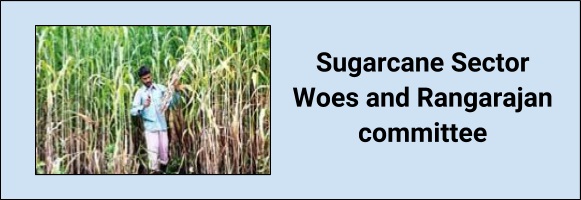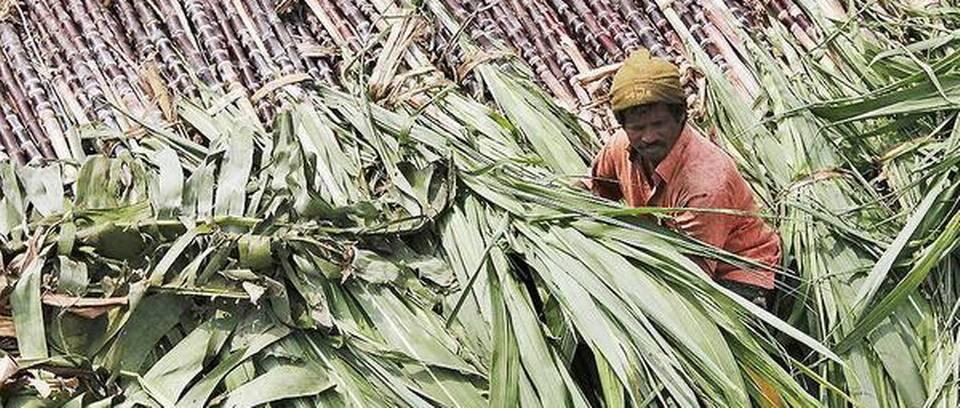(HOT) UPSC Current Affairs 2025 PDF
NEW! The Gist (NOV-2025) | E-BOOKS
Sugarcane Sector Woes and Rangarajan committee : Important Topics for UPSC Exams

Sugarcane Sector Woes and Rangarajan committee : Important Topics for UPSC Exams
News:
The sugar industry is reiterating its demand to the Centre for production subsidy to sustain sugarcane payments to farmers and to support exports

What are the problems in Sugarcane sector?
-
Low yield of sugarcane
-
Short crushing season
-
Low rate of recovery
-
High cost of production
-
Improper utilization of byproducts like bagassee and molasses
-
Small size of mills and obsolete machinery
-
Levy Sugar : Sugar mills are required to surrender a proportion of production at the prices lower than that of market price
-
Government restrictions: APMC’s which mandate that the growers can only sell the produce to the designated nearest Mandi
-
Cane pricing issue: Centre announces FRP- fair and remunerative price, states can also intervene through state administered price
-
Trade policy for sugar is often meddled with and government frequently places import and export restrictions to manage prices.
-
Present issue of low prices and accumulation of sugarcane price arrears
Buy Printed Complete Study Materials for UPSC IAS PRELIMS Exam
Online Crash Course for UPSC PRE Exam
Differences in North and peninsular region
-
Peninsular region records higher yield per unt area as compared to northern areas.
-
Sucrose content in south is higher
-
Crushing season in south is longer
-
Mills in south are equipped with better machinery
What does the government usually do to avoid the crises
- Trade restrictions:
- Raising import duty
- Reduction in export duties
- Export of sugar
But these moves do not deliver the intended results as they donot address the structural issues in the sector as suggested bby Rangarajan Committee.
Rangarajan committee recommendations
-
Export and import policy, it said, should not be guided by domestic availability.
-
The committee suggested the removal of the concept of a minimum distance of 15 km between any two sugar mills, obligating a mill to buy cane from growers within the reservation area. Instead, mills must enter into contracts with farmers. This would help to phase out the cane reservation area and bonding.
-
It said the State Administered Price (SAP) of sugar cane set by the States should be done away with, in favour of the Fair and Remunerative Price (FRP) set by the Centre as the minimum
-
Mills must share 70 per cent of the value of sugar and each by-product, including bagasse, molasses and press-mud (ex-mill), as cane dues payable to farmers for supplies
-
Committee said the system of levy sugar should be done away with. Under it, the mills are required to sell 10 per cent of their production to the government at below market price for the poor under the TPDS. Instead, the panel said, the States that wanted to provide sugar under the TPDS might procure from the open market through competitive bidding, and also fix the issue price.
-
It also asked the government to rationalize the current issue price for TPDS sugar, which has not been revised for many years.
-
Committee said the prices of by-products should be market-determined with no earmarked end-use allocations.
Way forward
-
Bhargav formula should be adopted
-
The rest of the recommendations of Rangarajan panel for complete deregulation of sugar sector are forward looking and hence must be accepted win consultation with farmer producer organizations and representatives.
-
Sugar development fund can be created.
MODEL QUESTIONS :
Prelims question
1. Consider the following statements
A. Fair and remunerative price in case of sugarcane is approved by cabinet committee on economic affairs
B. Bagasse is one of the by product of Sugarcane processing industry.
C. Government mandates 5% ethanol blending in petrol
Which of the above statement/s are correct?
-
A and B
-
B and C
-
A and C
-
All of the above
Correct answer: 3
Mains Questions

